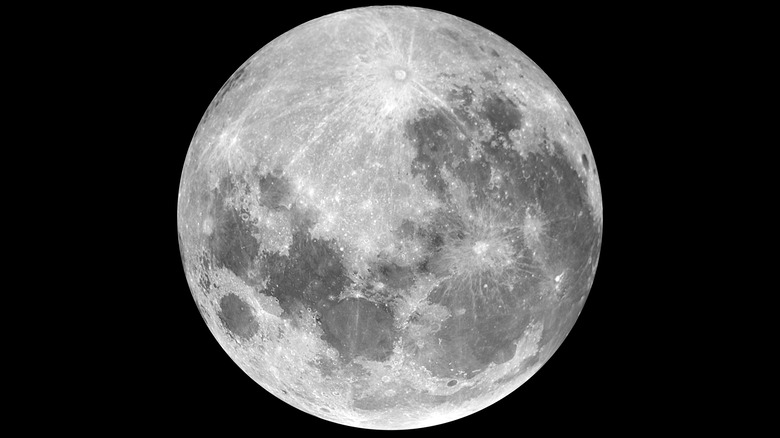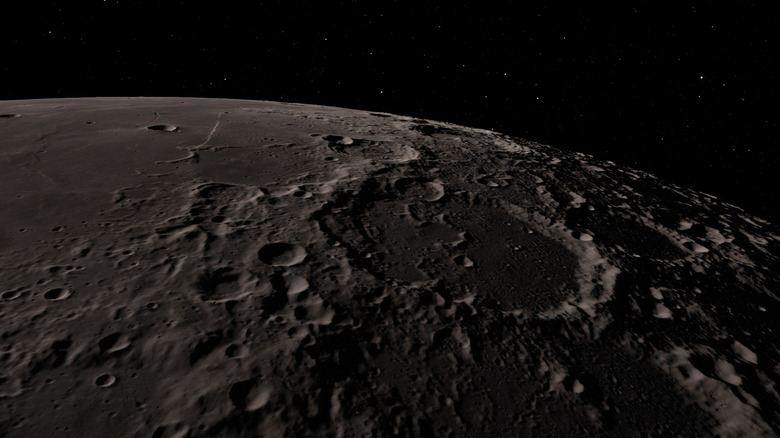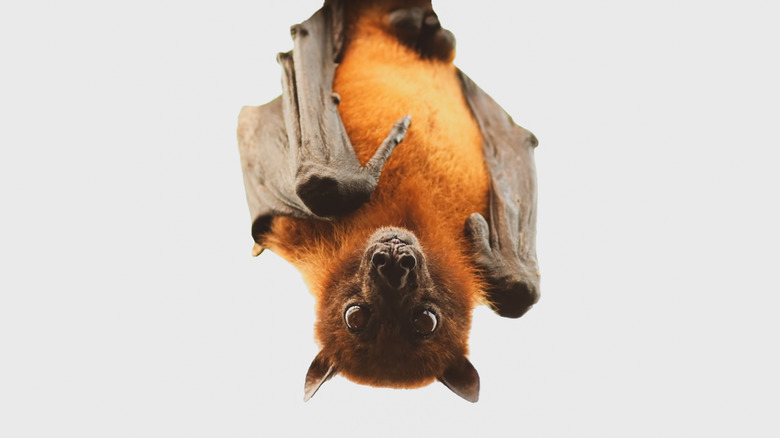Why The Moon Is Upside Down In Australia
If you're fortunate enough to get to travel to Australia, which lies in the Southern Hemisphere (that is, south of the Equator), you'll notice quite a few differences, not the least of which is that their hottest months are December, January, and February (per the Australian government's Bureau of Meteorology). FYI, contrary to what "The Simpsons" told us, one such difference is not the direction in which their toilets flush; that depends on how the jets in the toilet were designed and not where the plumbing is in relation to the equator, The Atlantic reported. But another very real difference is how the moon appears in the sky.
The full moon is a stunning sight, no matter how many times you happen to look up at it. Gazing up at the full moon from the Northern Hemisphere, once you let your eyes relax and see more detail on the luminous orb, you'll notice the Oceanus Procellarum spreading across the Western and Northern parts of it. "The Oceanus what, now?" you may be wondering.
Oceanus Procellarum
The Natural History Museum explains that the darker spots scattered across the surface of the moon are called "maria," which is the Latin term for "seas," which scientists once believed they were. It turns out that these spots don't, and never did, contain water like our Earth seas, but rather lava. The marks that look like seas are actually remnants of explosive, violent volcanic eruptions that happened a very, very long time ago. Nonetheless, the "maria" term stuck.
The Oceanus Procellarum, or "Ocean of Storms," is the largest grouping of maria, measuring about 1,800 miles wide, according to Slate. The Ocean of Storms formed about 3.5 billion years ago. It was once thought that these seas were formed by massive objects from elsewhere hitting the face of the moon, but subsequent studying of the area showed volcanic rifts had produced so much lava that the moon's crust was weighed down, giving it its craggy appearance.
It's all a matter of perspective
Gaze at the full moon in Australia, and the Oceanus Procellarum is the mirror image of what you'd see at home. The aforementioned largest grouping of maria will appear on the more south-eastern side of a full moon. Science Alert explains that this is because, the Earth being round and all, people standing in Australia are upside-down, compared to someone in North America. And, as you might have guessed, it's most certainly not just the moon that looks different — it's all the other stars and constellations, too. Astronomer Jake Clark noted that the celestial hunter Orion presents a bit differently in the land down under: "In Australia, Orion's leg and belt is commonly known as 'The Saucepan', as it looks like a big old cooking pot!"
The stars and constellations also appear brighter in the southern hemisphere, according to the BBC's Sky at Night Magazine, because the south pole points toward the center of the spiraling Milky Way. Star enthusiasts can see such glittering displays as Crux (aka the Southern Cross), Omega Centauri, and the Coalsack Nebula while visiting the Southern hemisphere.
Of course, upside-down and rightside-up are relative terms, depending on which hemisphere you're in, and whether your head is facing the North or South Pole when you stand up straight. Like most things in life, it's all a matter of perspective.


